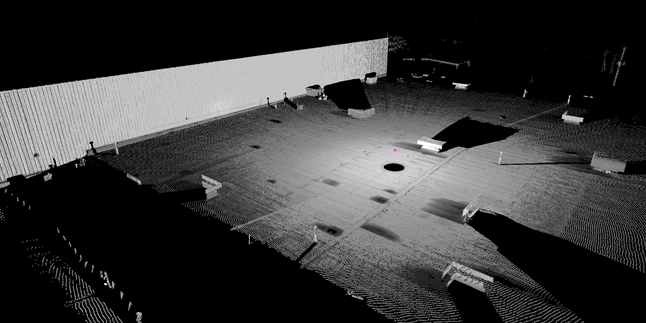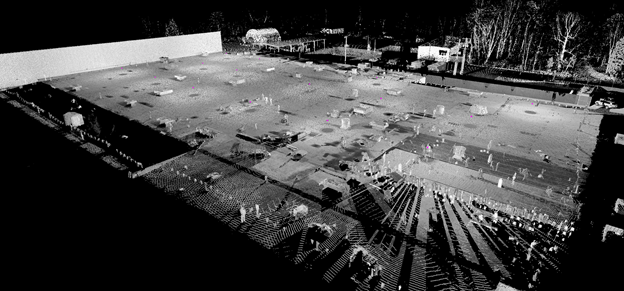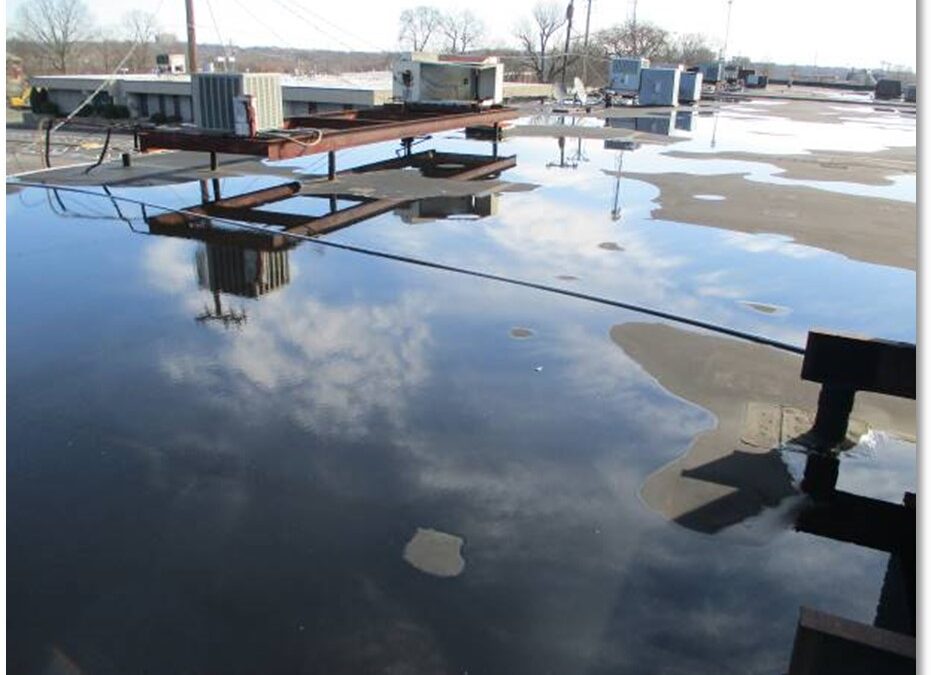Figure 1: Example of ponding on building rooftop
Ponding is water that remains on a roof surface longer than 48 hours after the termination of the most recent rain event (NRCA). This accumulation of water, caused by the deflection of the roof structure, results in added ponding load (ASCE 7-16). Ponding can be caused by numerous reasons including, deck deflection, improper drain placement, improper tapered insulation design, obstructed or blocked flow, clogged drains, or exceeded drainage capacity. If ponding is not addressed, it can result in aesthetic and performance concerns, and ultimately lead to ponding instability and potential roof failure. Currently, there are no universally acceptable standards to quantify ponding water. Furthermore, there is no feasible or accurate method that exists to measure the extent and location of ponding.
3D Laser Scanning
3D laser scanning is a technology that has been around for many years, and can be used to create a highly detailed and accurate 3D model of a building’s rooftop. It uses light rays to accurately locate objects in 3D space.


Figure 2: Top – single laser scan. Bottom – 3D model created from several laser scans.
Several scans are taken across the building’s rooftop to cover the area of interest. Each scan produces about 60 million data points and covers an effective area of about 5000 ft2. These scans are then stitched together to create a single 3D model that can be used to verify roof slopes, water flow direction, tapered crickets, and tributary areas.
 Figure 3: Elevation profile |
 Figure 4: Slope Figure 4: Slope |
 Figure 5: Water flow direction and tapered crickets Figure 5: Water flow direction and tapered crickets |
 Figure 6: Tributary areas Figure 6: Tributary areas |
Using flow modeling, it is possible to not only predict where water drains to, but where it will accumulate along the way. This information is invaluable in assessing whether a roof will succumb to ponding instability and to formulate a repair plan to alleviate the ponding load. This repair plan may include adding additional drains at strategic locations to provide optimal relief and by filling in depressions with additional material to ensure positive slope towards the drain.

Figure 7: Flow modeling used to predict ponding area, depth, volume, and weight

Figure 8: Adding drains at strategic locations to provide optimal relief

Figure 9: Filling in depressions to ensure positive slope
Conclusion
3D laser scanning can help identify issues that may not be identifiable with the naked eye, help avoid costly repairs or modifications, and ensure project schedule is completed on time and within budget. By identifying problems early, either before construction of the roof or prior to re-roofing, a project can be performed without delay and with added confidence.
Biographies
Mike Sexton, RRO, CSRP is a Building Enclosure Consultant and roofing subject matter expert at Terracon Consulting. Contact Mike at mike.sexton@terracon.com.
Josiah Lau is an Engineer and co-founder of Novlum, a software company specializing in 3D data processing, real-time visualization and analysis. Contact Josiah at jlau@novlum.com.

